
views
- The legend rule means that you cannot have more than one copy of a given legend under your control at a given time.
- The legend rule only applies if the cards in question are identical in terms of their name. They must be word-for-word interchangeable.
- If you do play more than one copy of a legend, choose one to keep and put the other copy in the graveyard.
How the Legend Rule Works
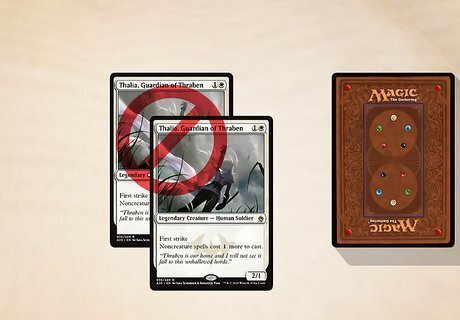
Two legends with the same name cannot be in play at the same time. At its core, the legend rule prevents two legendary cards with the same name from being in play at the same time under the same controller. So, you can have one copy of Thalia, Guardian of Thraben on the battlefield, but you cannot have two copies of Thalia, Guardian of Thraben. This is unique to legends, as you can have any number of identical nonlegendary creatures on the battlefield. The name of the legendary card must be identical. For example, you could have a Thalia, Guardian of Thraben and a Thalia, Heretic Cathar on board—even though they technically display the same character. You and your opponent can both control the same legend. For example, it’s 100% okay if you and your opponent both control your own copies of Thalia, Heretic Cathar.
What are legends in Magic: The Gathering?

Legends depict important characters from MTG’s story. Magic isn’t just a card game! It’s also an eternally developing tale about planeswalkers, fanciful worlds, intense conflicts, and more. The legendary cards reflect the characters, places, and creatures that are core to the story. It’s sort of the game designer's way of signaling, “Hey, this card is important!” Every new set of cards that comes out takes place in a different world (called planes), so the legends of each plane tend to pop up whenever a new set comes out in a plane the game has already visited. Dedicated MTG players tend to have favorite characters or settings from the story. If you keep playing long enough, you’ll find certain stories or planes that really pique your interest.
How to Tell a Card Is Legendary
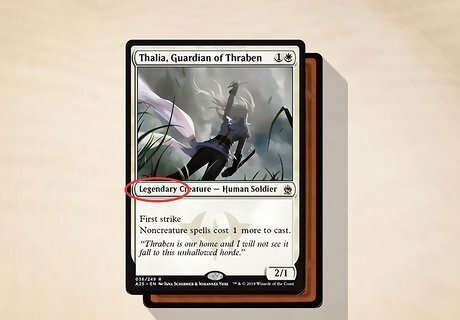
The word “legendary” appears in the card’s type line. Look at any Magic card. Just below the art, you can find the card type line and the set symbol. The card type line lists what type of card it is, any relevant subtypes, and whether the card is legendary or not (the word “Legendary” will appear in the type line). Take a look at Ragavan, Nimble Pilferer. The card type says “Legendary Creature – Monkey Pirate.” That “legendary” word means Ragavan is a legend. The set symbol tells you what set of cards the card you’re looking at is from. The color of the set symbol tells you the rarity. Almost all legends (with a handful of exceptions) will have a gold or orange set symbol, which means they’re rare or mythic rare, respectively.
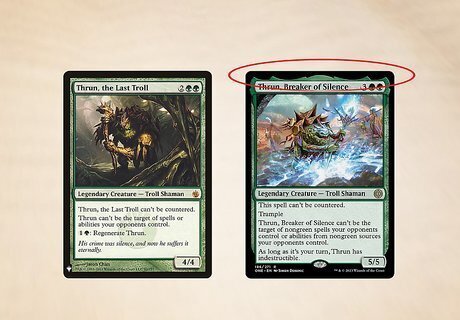
Legends printed after 2018 have a unique card frame. Back in the day, all cards used the same card frame design. Starting with the Dominaria set in 2018, all legendary cards were given a unique card frame with flourishes at the top and different color textures that make it stand out. For example, look at Thrun, the Last Troll’s card frame to see the way they used to look. All legend frames these days look more like Thrun, Breaker of Silence. Note the different frame shape at the top!
Applying the Legend Rule
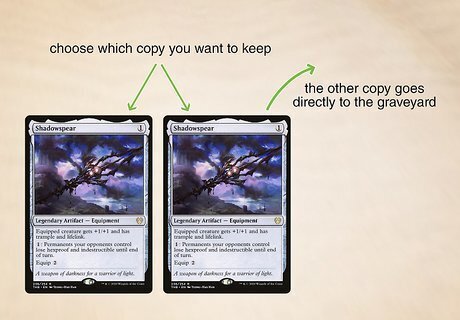
If you cast a second legend on accident, you pick which copy stays. The legend rule doesn’t normally come up unless you forget about it. Say you have a copy of Shadowspear on the board and you forget it’s a legend. You cast a second Shadowspear, and the spell resolves. You now have to choose which copy of the Shadowspear you want to keep. The other copy goes directly to the graveyard. The legend rule is a state-based effect. You cannot respond or reply to the legend rule effect—it’s just a thing that happens instantly. There are a few fringe scenarios where you might want to intentionally cast a second legend after attacking with the first copy, just in case you need the blocker. Most of the time, it’s advantageous to hold on to extra copies of any legends you draw in case one copy is destroyed.
The Legend Rule and Planeswalkers
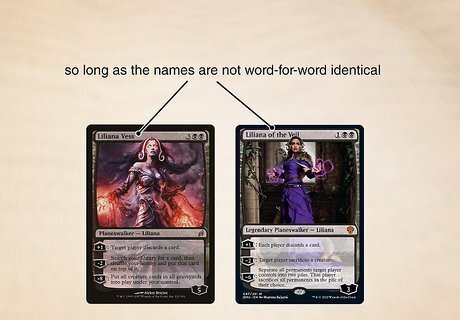
You can play multiple planeswalkers so long as the names are different. It used to be that the legend rule applied to any planeswalkers with the same name. In other words, if you owned a Lilianna Vess and you cast a Liliana of the Veil, the legend rule triggered. That is no longer the case—so long as the names of the cards are not word-for-word identical, you can own multiple planeswalkers with the same name at the same time. This is a little counterintuitive since planeswalkers are supposed to represent specific characters that don’t have different identities on different planes, but you can 100% own three copies of a Jace, Liliana, Teferi, etc. so long as the names are different.
The Legend Rule and Sorceries
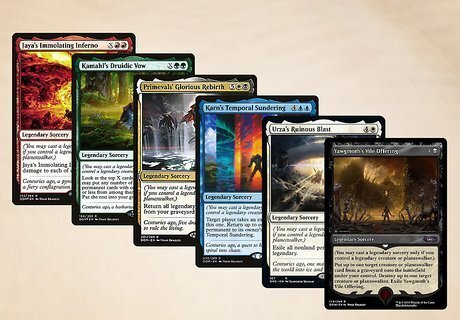
Legendary sorceries can only be cast if you control another legend. Legendary sorceries were introduced in Dominaria in 2018. You can only cast a legendary sorcery if you already control a legendary creature or planeswalker. Legendary lands, like Boseiju, Who Shelters All, and non-creature artifacts, like Akroma’s Memorial, do not allow you to cast legendary sorceries. There are only 6 of these sorceries, so this probably won’t come up very often. Dominaria is also the first set to contain uncommon legendary cards, like Slimefoot, the Stowaway. Before Dominaria, all legends were rare or mythic rare.
Cards that Get Around the Legend Rule
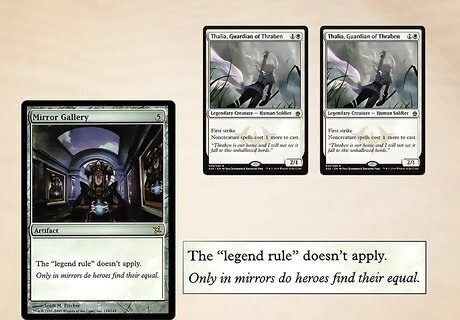
A handful of cards let you ignore the legend rule. Mirror Gallery was the first card that basically turned the legend rule off so that you can own multiple copies of the same legendary card at the same time (just like non-ledgendary cards). There are also cards that clone legendary creatures into non-legends, like Double Major or Nanogene Conversion. The cards that let you duplicate legends tend to be extremely niche (and not very competitive), so you don’t run into them all that often.

















Comments
0 comment